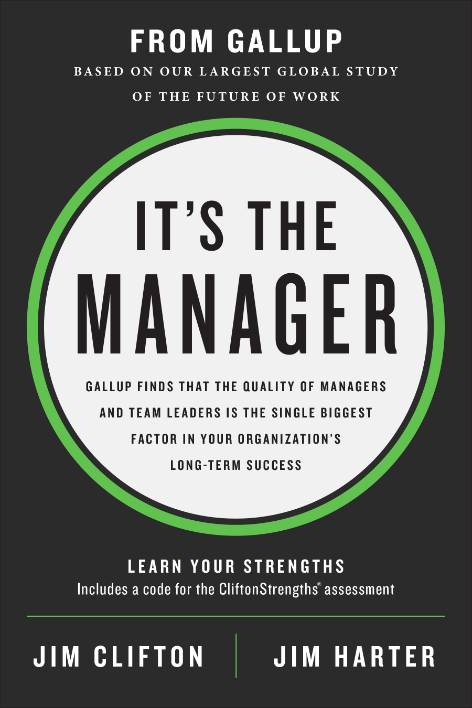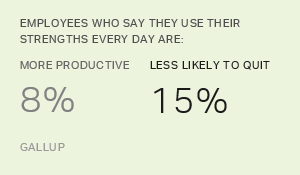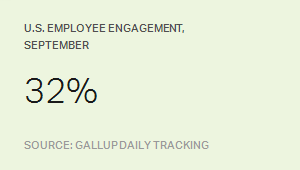There's a lot more to wellness than physical health. Yet only 12% of U.S. employers offer wide-ranging wellbeing programs that include elements like social support, health education and proper follow-up for health screenings, all built into a culture that sees workers as whole people.
That's a problem. Wellness programs can supplement productivity and address rising healthcare costs, when designed properly. If those are outcomes your organization is looking for, you need to broaden your scope of what wellness entails.
Your company needs a wellbeing program for the whole person.
Imagine feeling stressed about your finances, having trouble with an important relationship or being significantly overweight. If your employer sent out a challenge to complete 10,000 steps every day for a month, do you think that would help you? Probably not -- in fact, it might just add to your worries.
That's because, as researchers have found, there is more to experiencing a healthy, fulfilling life than just being physically healthy. Gallup's approach to measuring wellbeing includes four other elements in addition to physical health: career, social, financial and community wellbeing.
So what does a great wellbeing initiative look like?
- Leadership integrates all five elements of wellbeing into the organization's HR strategy, employee development efforts and benefits offerings.
- Leaders carefully select and train managers, who are the organization's biggest influencers of wellbeing and engagement.
- Wellbeing becomes part of an exceptional employee experience, where people enjoy their physical surroundings.
- Managers provide employees opportunities to learn and grow within their role and focus on their strengths instead of their weaknesses.
- The organization creates a highly communicative environment where people are treated fairly and where leaders understand how to prevent burnout.
Gallup partners with clients that focus on holistic wellbeing, and some even take the initiative to build their own certification processes. Rex Miller, author of The Healthy Workplace Nudge, considers this to be a "top 5%" offering -- a combination of committed leadership and the essential structure and culture for employee health and wellbeing. As a result, employee wellness is looked at in its totality, and these companies achieve business results that are far better than average.
There is more to experiencing a healthy, fulfilling life than just being physically healthy.
Maybe your HR department has been offering traditional workplace wellness interventions -- like disease management, health risk assessments or gamified platforms tied to rewards. But broadening your scope to the whole person will generate more successful outcomes.
Gallup's Culture Transformation framework can help:
Define your culture: Determine and clarify what is and should be the purpose, mission, vision and values of your organization.
Align your workforce: Create awareness, shared understanding and belief among senior leadership and the workforce at all levels.
Drive adoption: Incorporate the defined culture into behaviors and work practices, and recalibrate systems, policies and processes.
Sustain your ecosystem: Foster and enrich the culture through ongoing monitoring, accountability and reinforcement mechanisms for the long term.
Gallup's Culture Transformation framework helps organizations define their culture and reach an aspired state to achieve positive business outcomes through an enhanced employee (and ultimately, customer) experience. Though it was designed for large-scale, organization-wide impact, it can be focused on specific initiatives, such as improving wellness program participation and outcomes.
The first step is viewing your culture through a wellness lens. Gain a better understanding of how wellness is perceived and lived in your company -- good, bad and neutral --- and look for places where your aspirational state is already achieved. Those pockets provide role models and best practices that can educate the whole company.
Next, share your vision of the best possible wellness program with stakeholders and managers. Especially managers -- they're the conduit between the mission, values and purpose of your broad approach to wellness and employees. Wellness programs take root when managers tend them.
HR's strategic partnership is critical to the adoption of a broader view of wellbeing. HR is perfectly situated to align the organization's formal and informal communications outlets to keep energy focused on progress, especially if holistic wellness is a new concept in your organization.
Finally, all initiatives do better when measured, tracked and reviewed. Create an oversight structure to drive --and learn from -- your commitment to holistic wellbeing. This should include recognition for achievement as well as other intrinsic and extrinsic accountability measures.
An investment in holistic wellbeing yields multiple ROIs.
Many workplace wellness programs are weighted down with vendor partner and incentives costs. Health insurance is staggeringly expensive. Health benefit costs are rising three times faster than inflation, annual healthcare costs in the U.S. are nearing $15,000 per employee -- and most wellness programs take it on the chin as time and again research studies demonstrate their ineffectiveness.
These problems are preventable by implementing a culture of wellbeing with an integrated health outcomes strategy.
For instance, reallocating funds to invest in improving your work environment, training your managers to be better supporters of wellbeing and providing opportunities for employees to meaningfully volunteer in their community can improve wellbeing outcomes in multiple ways at once. Most importantly, taking action to improve their wellbeing shows employees that your leaders care about them as people first.
That's an important part of employee engagement, and the return on engagement comes in the form of higher productivity, profitability and retention.
Addressing only the physical self may not attend to the causes of poor health habits and outcomes. If it adds to people's worries, it probably won't improve engagement, either -- and if administered insensitively may only increase the pressure on already-stressed employees. Integrating all of the elements of wellbeing into a holistic program is a better bet for real wellness -- and better business outcomes.
Make strides to build a healthier organization with these Gallup offerings:
- Read our findings on the five universal elements of wellbeing based on studies of people in more than 150 countries.
- Discover what millennials and women in America need from employers in order to thrive.
- Connect with a Gallup consultant to learn more about creating your ideal culture.






